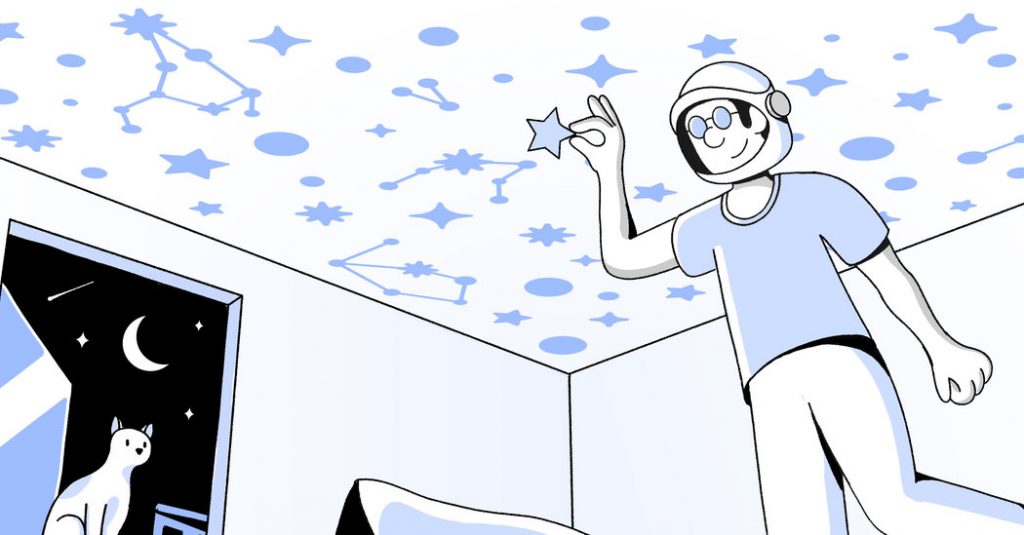Classic adhesive star kits let you be the architect of your galaxy. Some well-reviewed and simple-to-use options include Encambio Alcrea’s original kit ($14 and comes with several sky maps), Airbin’s 3D Domed Glow in the Dark Stars ($14) and LIDERSTAR’s set ($12).
To start your adhesive project, place Polaris (a.k.a. the North Star) first. You can see it year-round in the Northern Hemisphere, and it’s the only star that doesn’t rotate in the sky over the course of an evening. You can then begin to locate circumpolar constellations, which move in a circle around the North Star. From New York City, for example, the two circumpolar constellations are Ursa Major (the Big Dipper) and Ursa Minor (the Little Dipper). Use a pencil to place little dots on your ceiling to mark where you’ll place the glowing stars, and then start sticking.
There are 88 officially recognized constellations, but you will most likely want to focus on 10 or fewer. If you are starting your project now, consider re-creating what’s visible in your sky during the summer months. Viewed from North America, that could be the Summer Triangle — made up of Deneb, Altair and Vega, the brightest stars in the constellations Cygnus, Aquila and Lyra — or the Pleiades Cluster, which is a stellar nursery (where new stars form).
Add more to your galaxy as your motivation and time allow.
There is, of course, an app for this.
Viewing the stars is more pleasurable when you know what you’re looking for, can identify a few of the major constellations and are familiar with some of the ancient stories that gave the constellations their names. Apps like iSky, Google Sky and Star Chart have free versions available for iOS and Android devices, so you can point your phone up to the sky (or whatever you have projected, painted or adhered to your ceiling) and identify what you are seeing — as well as learn the history, science and mythology, effectively putting the whole sky within your reach.
Or, use an app like Night Sky to pull out planets, stars and constellations and look at them in augmented reality, which enables you to see the depth and distance of what’s behind and around them. If you’re planning to travel this summer, Night Sky can show you what you’re able to see in another location, so you can better recognize the stars above once you’re there.
Go a little deeper.
Storytellers used the sky like a picture book to illustrate their tales of gods, mythical heroes and fabulous beasts. “Pictures in the Sky: The Origin and History of the Constellations,” a video made by the Royal Society of London, walks viewers through a variety of celestial back stories.
You could also consult a good book. “The Stars: A New Way to See Them,” by H.A. Rey, provides simple drawings of constellations that are easy to translate onto a ceiling. And “Cosmos: Possible Worlds,” by Ann Druyan — the recently published sequel to Carl Sagan’s “Cosmos” — is a gorgeously illustrated guide to the tales that budding astronomers have been telling each other for centuries.
